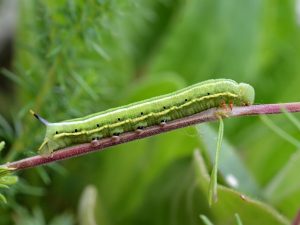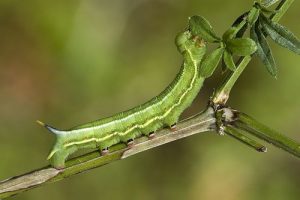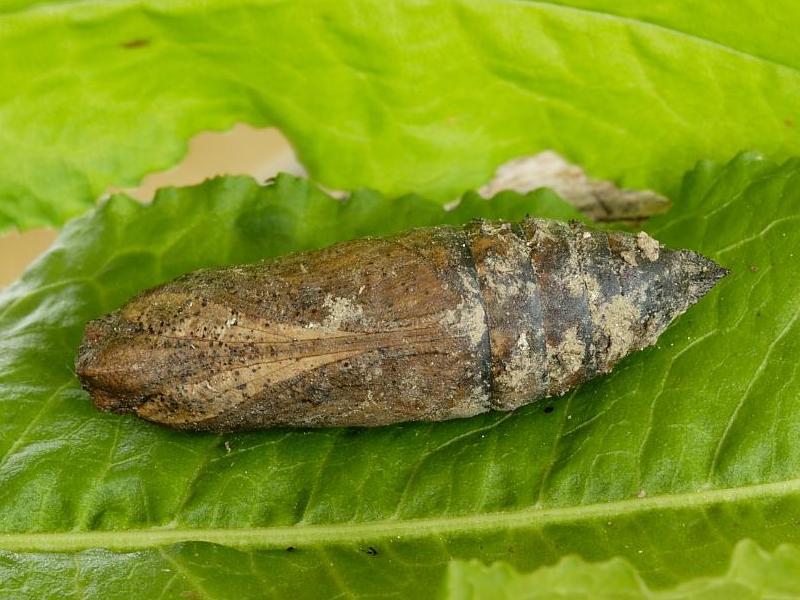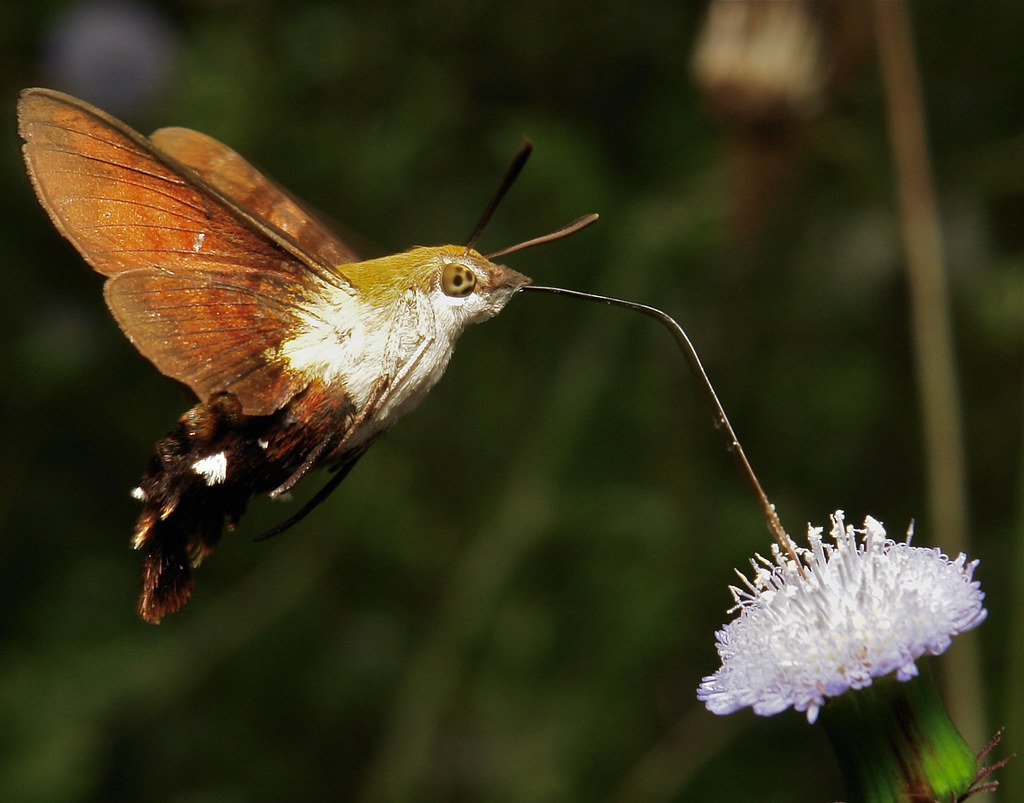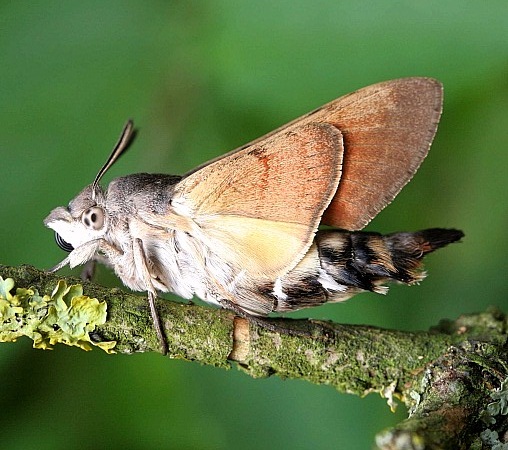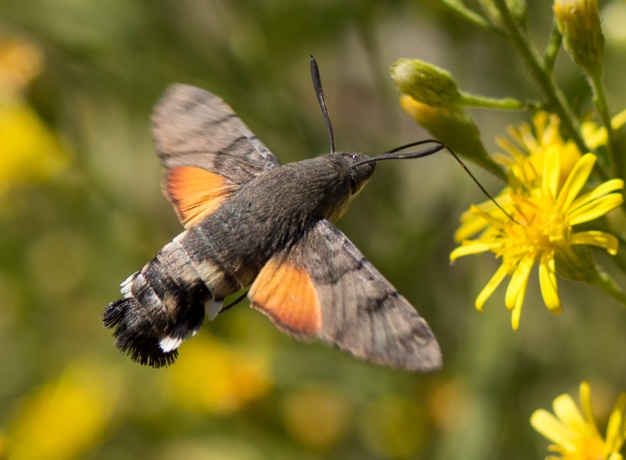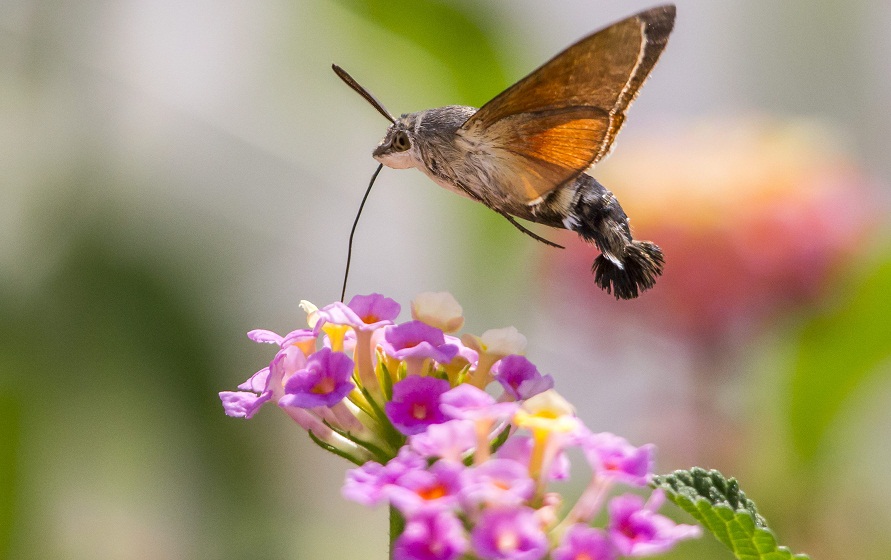Hummingbird Hawk-Moth (Macroglossum stellatarum)
Hummingbird hawk-moth described first by Swedish botanist Carl Linnaeus in 1758, in his book, the 10th edition of Systema Naturae is a part of the Sphingidae family. It has a wide range, spreading across Asia, North Africa, and southern Europe, but rarely seen.
i.pinimg.com
Scientific Classification
- Family: Sphingidae
- Genus: Macroglossum
- Scientific Name: Macroglossum stellatarum
Description and Identification
Caterpillar
They are yellow after emerging from the eggs and eventually turn to green during their second instar. The larva also has grey stripes with a cream border on the sides. The rare end of their forewings has purplish-red horns that turn blue in their final instar.
Pupa
About 2 inches long, the pupa is pale brown, having a prominent appendage on its head. It even has two spines occupying the end of its cremaster. It remains enclosed within silken cocoons, scattered near the host plants or curled leaves.
Adult Moth
Sexual Dimorphism: Present
Color and Appearance: When opened, the forewings, narrow and shorter than the hindwings, are brown, marked with wavy black lines. The hindwings appear orange with black markings on the edges. When closed, the hind and forewings are brown. The lines and markings are not too prominently visible then.
They have a stout, bullet-like body and a broad abdomen. The male species mostly have a fan-like hairy tail, just like the ones seen in hummingbirds, which remains absent in females.
Average wingspan: 4 – 4.5 cm
Flight pattern: Steady and consistent (similar to hummingbirds)
Season: June – September
Quick Facts
| Other Names | Hawk moth |
| Distribution | Southern Europe (mainly England, Ireland, Scotland, and Wales), parts of Asia, and northern Africa |
| Habitat | Meadows, bushes, parks, gardens, woodland edges, and all those regions where their host plants grow |
| Predators | Owls, other birds, bats, rodents, spiders |
| Lifespan of adults | About 7 months |
| Host plants | Galium, Rubia, Stellaria, Epilobium, Centranthus |
| Adult diet | Nectar-rich flowering plants like Centranthus, Viola, Nicotiana, Jasminum, Phlox, Syringa, Verbena, Primula |
Did You Know
- They have a sharp vision, especially when it comes to identifying colors.
- The hummingbird hawk-moth has been considered a sign of good luck in the past in different cultures.
- Its appearance, the tendency to make a humming noise when flying, and the trait of feeding on flowers with a tube-shaped petal make it closely similar to a hummingbird.
- Though named the hummingbird hawk moth, it is not to be confused with those of the Hemaris genus, also known by the same name in the United States.
Scientific Classification
- Family: Sphingidae
- Genus: Macroglossum
- Scientific Name: Macroglossum stellatarum


